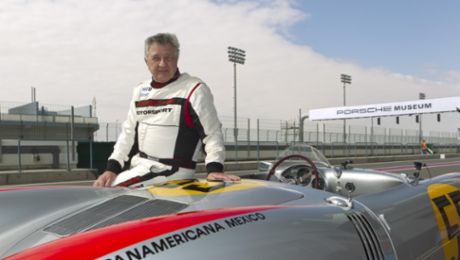As the successor to the Porsche 356, the 901 had big shoes to fill when it was launched in 1963. The 901 offered more space for passengers and luggage, as well as greater power and driving comfort. Designer Ferdinand Alexander Porsche, the eldest son of Ferry Porsche, was responsible for the design of the 2+2 seater with a hatchback on a unibody frame. “Optimising the function while uncompromisingly reducing the form to the essential. Transcending the familiar in order to keep finding the new, better solution,” said Ferdinand Alexander Porsche, describing his life’s mission. Porsche engineers therefore developed a new short-stroke, high-revving six-cylinder boxer engine with no less than 130 PS of power, with a five-speed manual gearbox.
In the years that followed, no car would inspire as much enthusiasm as the Porsche 911. Worldwide. No matter which 911 model, or which generation. Even just getting into any 911 is a similar experience. The familiar feel of the ergonomically perfect seat position, the look of the circular instruments, the intuitive operation of the controls. The low-slung front bonnet has always been bordered by two distinctive wings – ideal for lining the car up to hit the apex of corners.
The boxer engine growls to life with a twist of the ignition key next to the steering wheel. Throaty and raspy. Typically Porsche. Whether air-cooled or water-cooled, the boxer engine in the rear of the 911 has always been the model’s beating heart, its inimitable sound and powerful thrust delivering a one-of-a-kind driving experience.
Yet Porsche drivers also prize the reliability and efficiency of the 911. It is the sum of sports car performance: powerful engines that are efficient and robust, a concept geared towards fast and precise driving, and an extraordinary design that has defined the Porsche 911 for 60 years – and counting. The 911 also combines great model and engine variety with reliability.
No wonder, then, that the 911 has been the favourite car of many international artists, actors, fashion designers, athletes and entrepreneurs for decades. The Porsche 911 has had leading roles in countless films as well – the 1970 cinematic masterpiece ‘Le Mans’, starring Steve McQueen, for example, or ‘Bad Boys’ with Will Smith, in both 1990 and 2020.
“Porsche is the combination of an iconic heritage and modern, sports luxury. Our sports cars make customers’ dreams come true,” says Oliver Blume, Chairman of the Executive Board of Porsche AG.
Eight generations of the Porsche 911
With more than 1.1 million models built, the Porsche 911 is the top-selling sports car in the world. In each of its eight generations, engineers have upgraded and enhanced this icon while designers have refined its silhouette and demonstrated, time and again, the innovative spirit of Porsche. Like no other car, the 911 unites performance with quality, tradition with innovation, exclusivity with social acceptability, and form with functionality.

